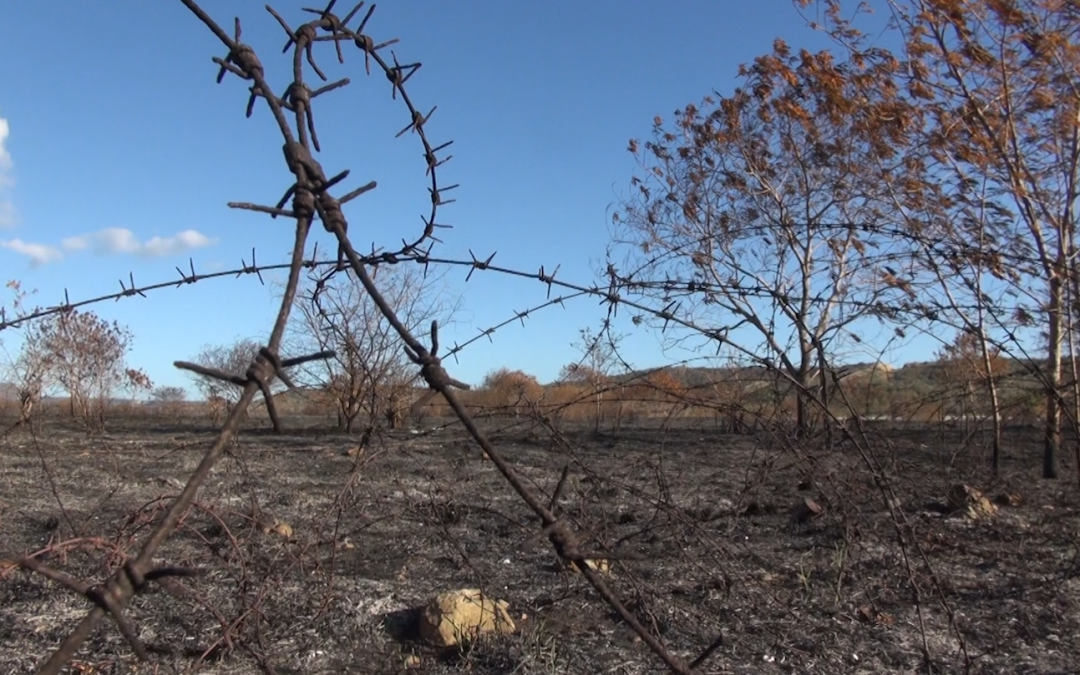GUANTANAMO BAY, Cuba – For 50 years they’ve been adversaries separated by a fence line. But for a few days last week, soldiers from the U.S. and Cuba fought on the same side, battling a massive wildfire that threatened Guantanamo Bay Naval Base.
The blaze set off nearly 1,000 land mines and burned 1,700 acres, forcing the evacuation of six neighborhoods on the naval base.
However the fire also shed light on a program that’s been operating quietly here for more than two decades.

US firefighters battle flames last week at Guantanamo Bay Naval Station. (Courtesy Guantanamo Bay Naval Station)
Each year U.S. soldiers join the Eastern Frontier Brigade, a branch of the Cuban military, for drills simulating fires, hurricanes or earthquakes. Last week’s wildfire marked the first time the two countries have worked together during an actual emergency.
“It worked great,” Naval Station Guantanamo Bay commander Capt. David Culpepper said Wednesday. “I was both pleasantly surprised at our response time and at our ability to put it all together exactly like we trained.”
Relations between the two countries have worsened during the Trump administration, particularly after several members of the U.S. embassy in Havana fell ill under mysterious circumstances last year. So the joint firefight marked rare moment of cooperation.
“The official U.S. relation with Cuba is not done here,” Culpepper said.
The fires first flared up on Feb. 21 outside the naval base east of the base in Cuba. Strong winds then drove the flames across the fence separating the US and Cuban jurisdictions.
“It’s ideal for a wildfire to maintain itself with the high winds that we had,” said Guantanamo Bay Fire Chief David Rose.

Guantanamo Fire Chief David Rose, left, said that high winds and unusually dry conditions made things ideal for a wildfire. (Eric Miller/MNS)
The mines that began exploding were on the Cuban side of the fence, and were laid decades ago. Witnesses reported hearing the “pops” of anti-personnel mines and the “booms” of anti-tank mines echoing across the base.
After the fire crossed the fence line, members of the Guantanamo Bay Fire and Emergency Services worked to contain the blaze. However, the unusually dry conditions made the fire difficult to control.
By midday on Feb. 22, “given the rapid nature of this and my uncertainty that we could contain this on our own,” Culpepper said, it was time to ask the Eastern Frontier Brigade for help.
The Cubans responded by sending three fire trucks, a command vehicle, about a dozen Cuban soldiers and one helicopter with a giant bucket dangling from the bottom.
For two hours, the Cuban helicopter swooped over the base, dumping water from Guantanamo Bay on the wildfires. American planes buzzed past, watching the blaze and calling out fire hotspots to the teams below.
“I felt like (the annual training) was more of a team-building exercise than an exercise that we’d ever actually use,” Culpepper said. “I was happy to note at the end of this thing how aggressively every different organization” from the two countries worked together.
In the end, only utility poles and power lines were consumed in the blaze. It was kept well away from the facilities where the U.S. keeps 41 alleged terrorists, including 9/11 mastermind Khalid Sheikh Mohammed.
By Feb. 23 the fire had been reduced to a few smoldering embers – and the two militaries had operated efficiently together, thanks to the years of drills.
“They’re firemen. They know what they’re doing. My guys are firemen. They know what they’re doing,” Culpepper said. “You just gotta make sure that they have a way to communicate.”



